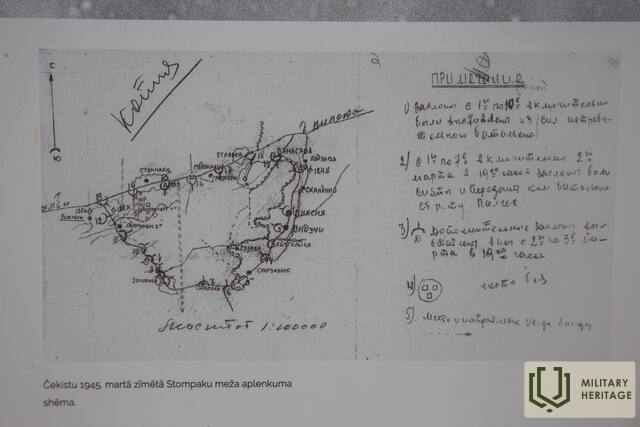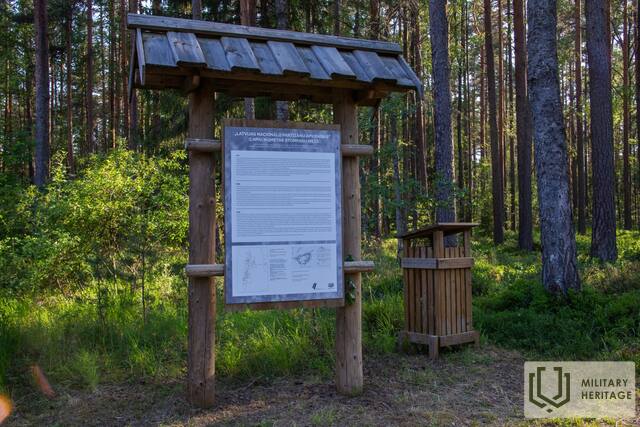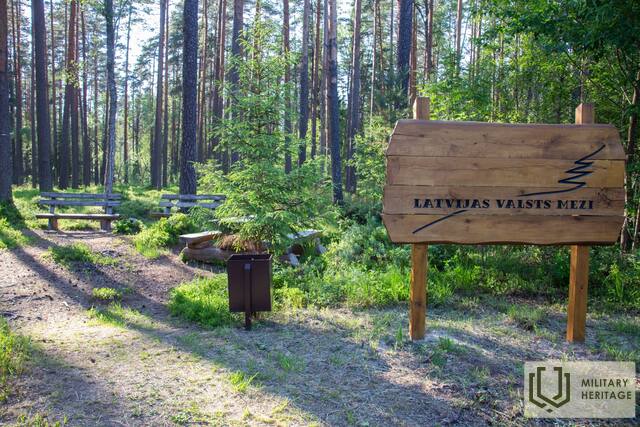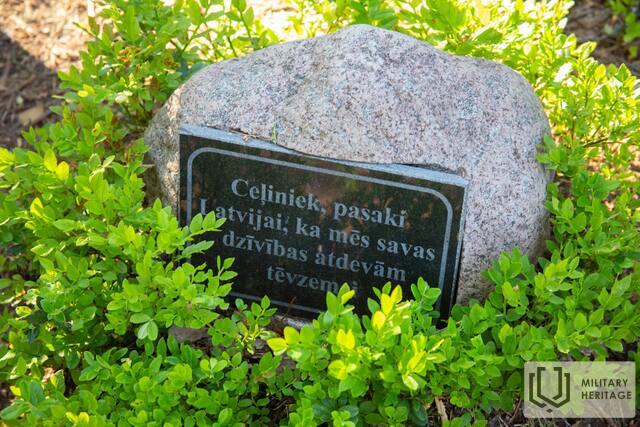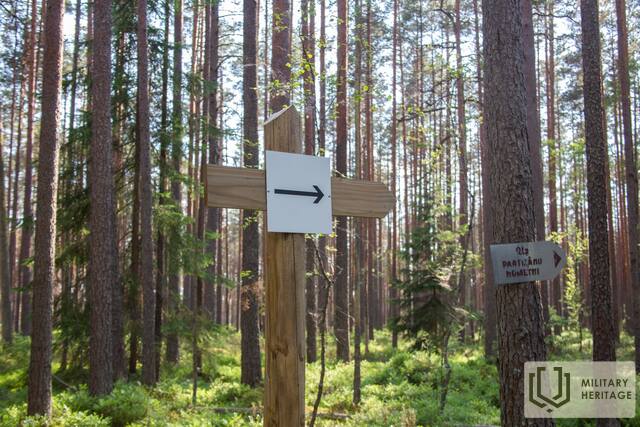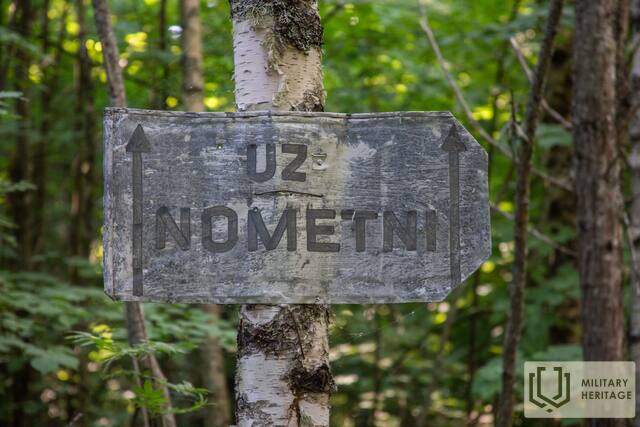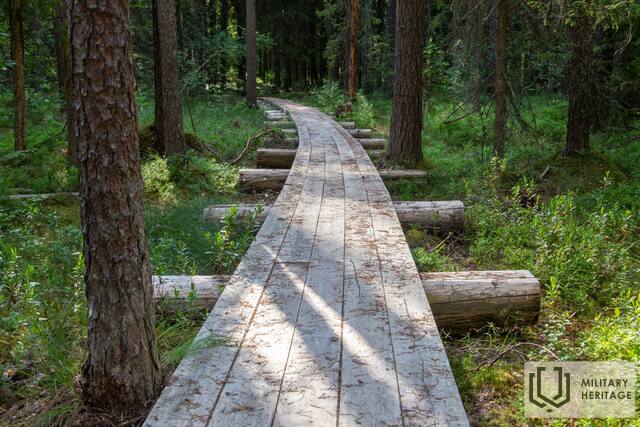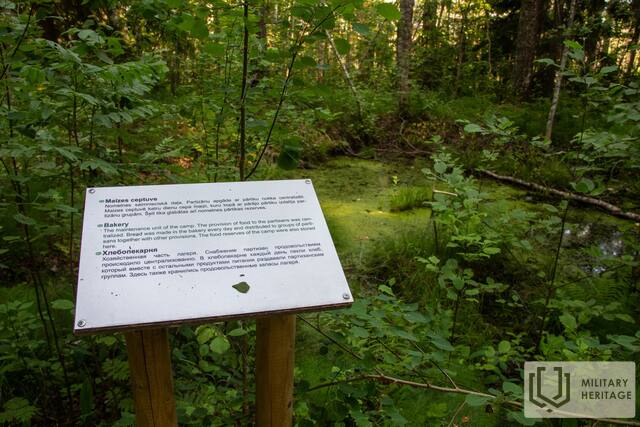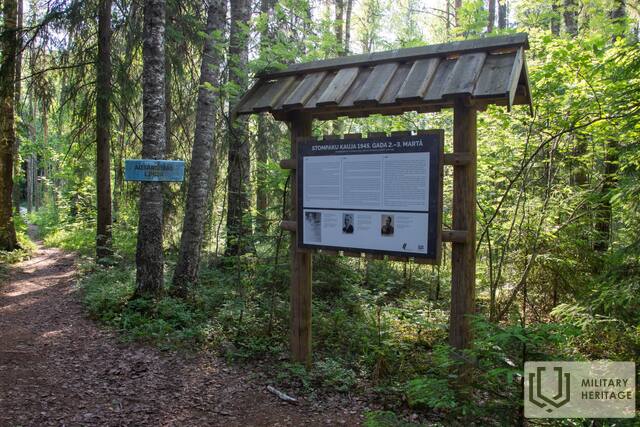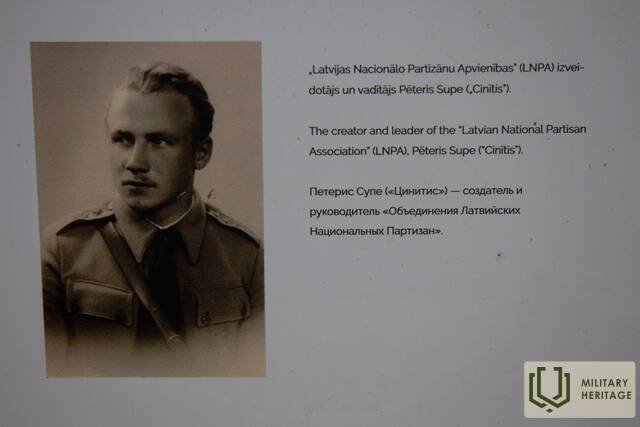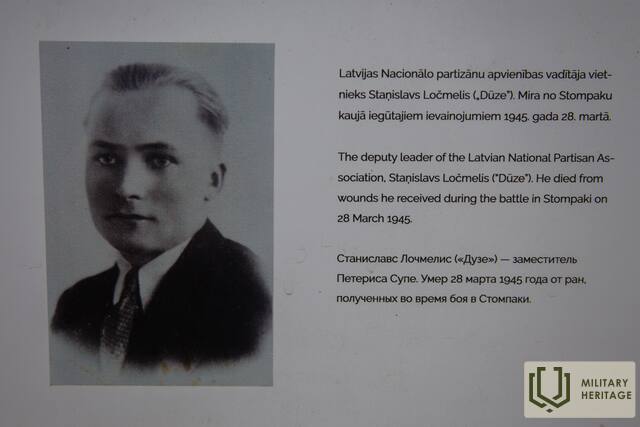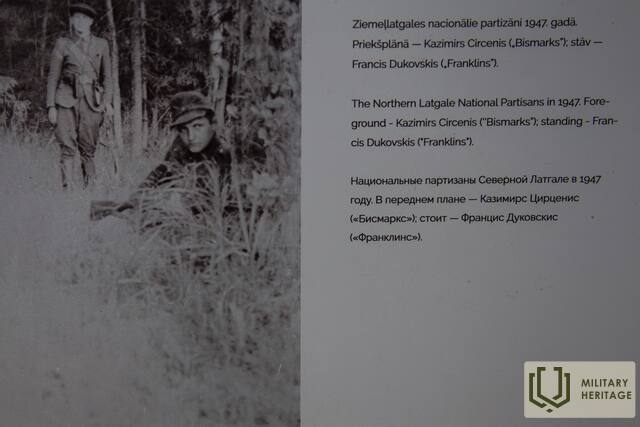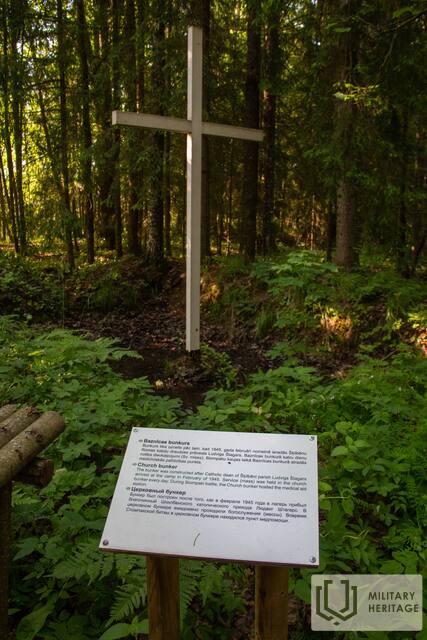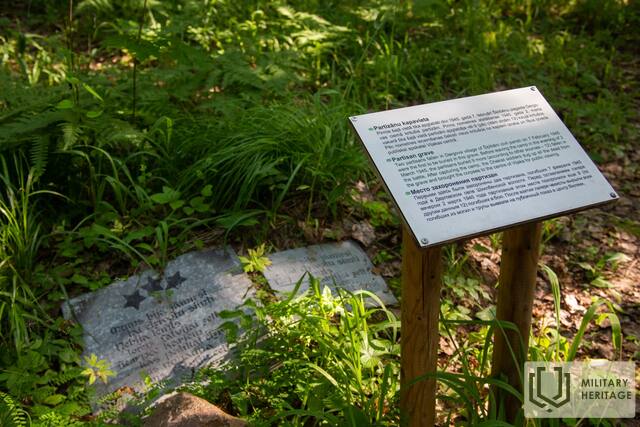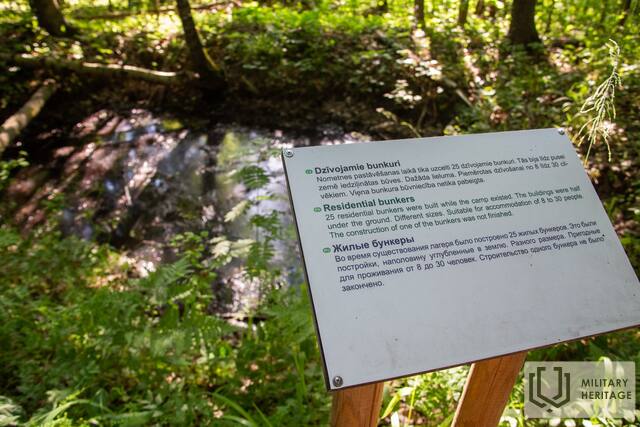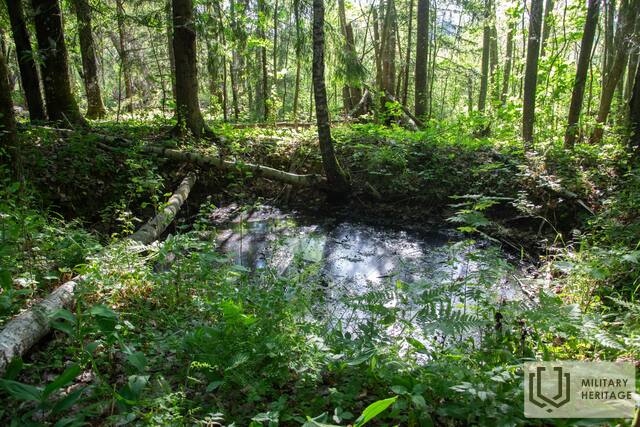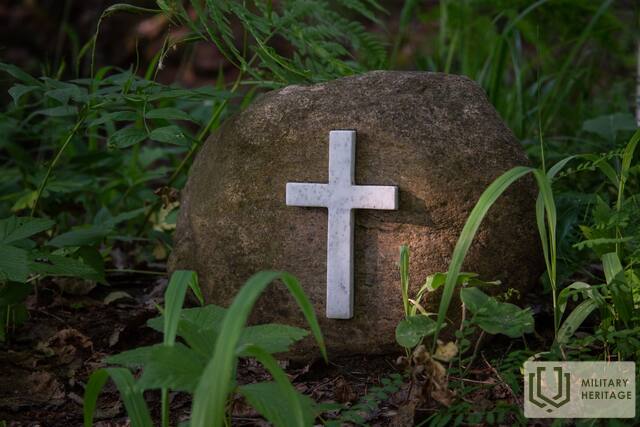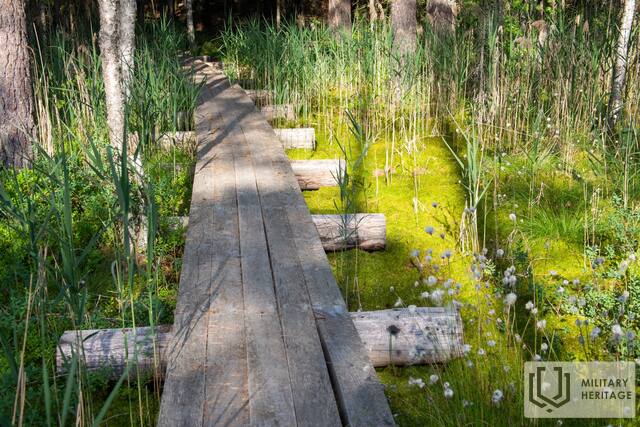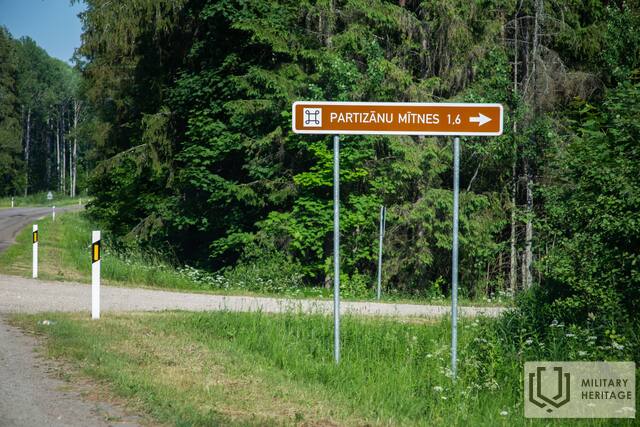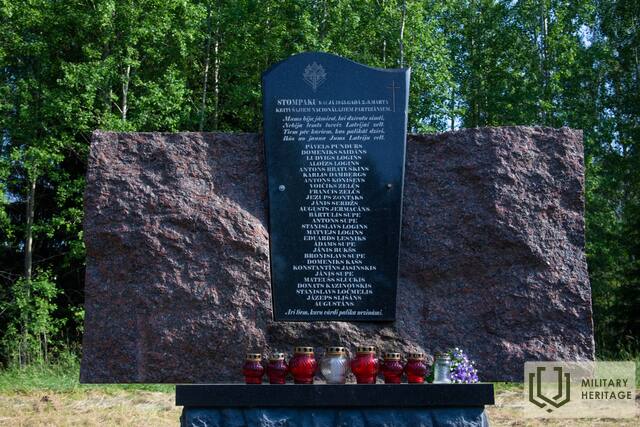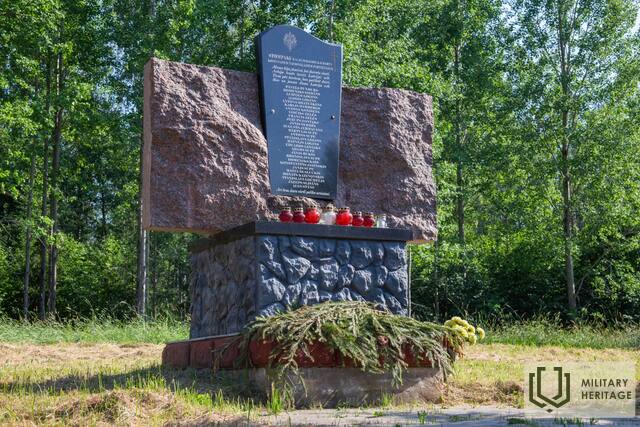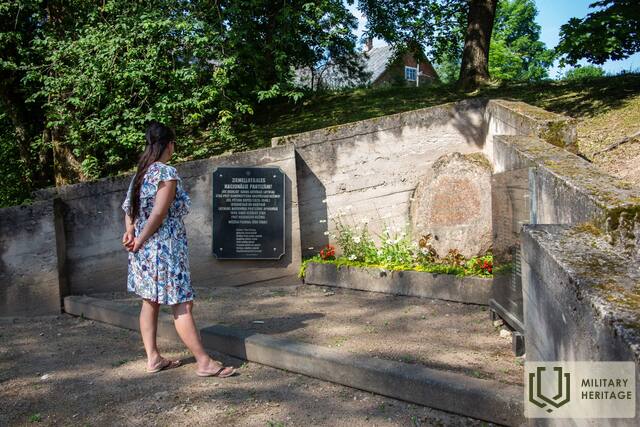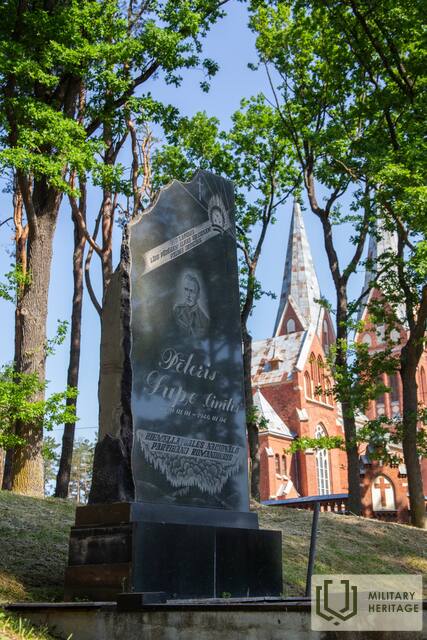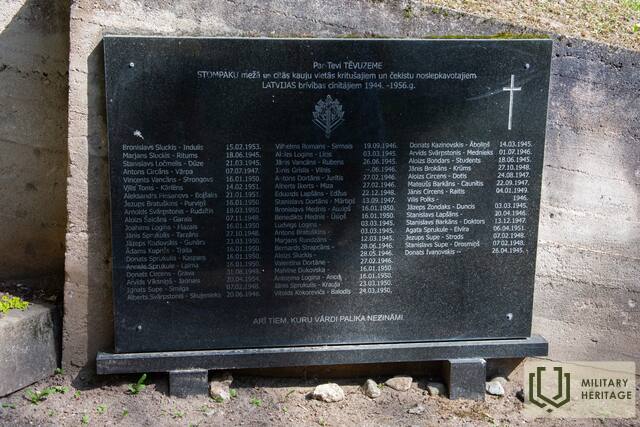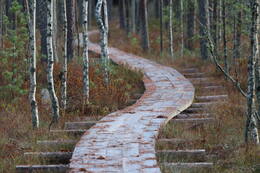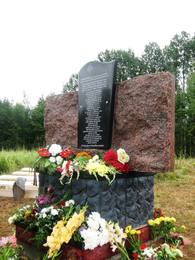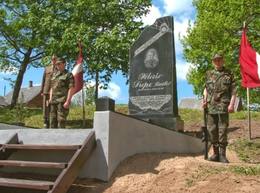Stompaku kauja III Nacionālie partizāni, II WW2
1945. gada 2. – 3. martā Abrenes apriņķa Viļakas pagastā (tagad Viļakas novada Susāju pagasts) norisinājās Stompaku kauja – latviešu nacionālo partizānu lielākā kauja pret padomju okupācijas režīma bruņotajiem formējumiem 2.pasaules kara beigās.
Bruņota nacionālās pretošanās kustība Abrenes apriņķī sāka veidoties 1944.gada vasarā, kad teritoriju atkārtoti okupēja Padomju Savienība. Lai izvairītos no arestiem un piespiedu mobilizēšanas Sarkanajā armijā daudzi iedzīvotāji pārgāja nelegālā stāvoklī dzīvojot mežos individuāli vai nelielās grupās. 1944. gada 2. oktobra naktī vācieši Abrenes apriņķī desantēja 11 vīru lielu diversantu grupu ar kodēto nosaukumu «Lapland». To vadīja bijušais apriņķa galvenais agronoms Pēteris Supe («Cinītis») un viņa vietnieks LU Tautsaimniecības fakultātes students Staņislavs Ločmelis («Dūze»). 1944. gada 10. decembrī viņi nodibināja Latvijas Nacionālo partizānu apvienību (LNPA).
1945. gada janvāra sākumā LNPA partizāni pēc P. Supes pavēles sāka pulcēties Stompaku purvos starp Balviem un Viļaku, kur uz vairākām purva saliņām izveidoja nometni, ko uzskata par lielāko partizānu nometni visā Baltijas reģionā. Tās oficiālais partizānu nosaukums bija «Saliņu mītnes».
Nometnei, kurā atradās ap 350 partizāni, uzbruka NKVD (PSRS Iekšlietu tautas komisariāts) karaspēka 143. strēlnieku pulks 483 vīru sastāvā. Kauja ilga no 2. marta plkst. 7.30 līdz 19.30, kad kaujas troksnis līdz 3. marta rītam pieklusa. Abu pušu pozīcijas atradās tikai 70 — 80 metru attālumā, un ilgākas vai īsākas apšaudes turpinājās ik pēc brīža. Izmantojot spēcīgo snigšanu un nakts aizsegu vairumam partizānu izdevās izkļūt no aplenkuma. Kaujā krita vai vēlāk no ievainojumiem mira 28 nacionālie partizāni, bet pretinieks zaudēja 46 cilvēkus.
Kritušajiem partizāniem uzstādīts piemineklis ar uzvārdiem, atrodas Viļakā pie katoļu baznīcas Parka ielas malā.
Piemineklis Stompaku kaujā kritušajiem 28 nacionālajiem partizāniem atklāts Balvu - Viļakas šosejas malā 2011.gada 11.augustā.
Uz Nacionālo partizānu mītnēm dabas liegumā “Stompaku purvi” ved marķēta taka, kura tika atklāta 2019.gada 2.martā
Papildus izziņas avoti
Zigmārs Turčinskis. Stompaku kauja 1945. gada 2. martā. SARGS.LV (12.04.2016): https://www.sargs.lv/lv/otrais-pasaules-kars/2016-04-12/stompaku-kauja-1945-gada-2-marta
Uldis Neiburgs. Mums bija jāmirst, lai dzīvotu simti. Stompaku kaujai – 70. LA.LV (14.03.2015) : https://www.la.lv/mums-bija-jamirst-lai-dzivotu-simtistompaku-kaujai-70
Tālā purvmala sapņos sērst nāk ... : [Grāmata par nacionālajiem partizāniem Latgalē] / iev. aut. J.Klīdzējs. -. Rēzekne : Latgales Kultūras centra izdevniecība, 1997.
Saistītās laikalīnijas
Saistītie objekti
Nacionālo partizānu mītnes dabas liegumā “Stompaku purvi”
Stompaku purvā Otrā pasaules kara laikā atradās viena no lielākajām nacionālo partizānu nometnēm Baltijā. Šo dien teritorija ir iekļauta dabas liegumā “Stompaku purvi”. Uz purva salām esošajā apmetnes vietā var nokļūt, ejot pa marķētu laipu taku. 1945. gada sākumā Stompaku purvā nacionālo partizānu nometnē dzīvoja 350-360 cilvēku, tostarp 40-50 sievietes.
Nometnē bija 24 dzīvojamie bunkuri – līdz pusei zemē ie dziļinātas būves, kurās varēja dzīvot 3-8 cilvēki. Tajā dar bojās maizes ceptuve, baznīcas bunkurs, un atradās trīs virszemes slieteņi zirgiem. Partizāni no nometnes veica uzbrukumus okupācijas režīma amatpersonām. 1945. gada 2.–3. martā šeit norisinājās Stompaku kauja – lielākā Latvijas nacionālo partizānu vēsturē. Nometnē esošajiem 350–360 partizāniem uzbruka NKVD 143. strēl nieku pulks un vietējie istrebīķeļu (iznīcinātāju) bataljona kaujinieki – kopskaitā 483 vīri. Kauja ilga visu 2. marta die nu. Naktī uz 3. martu partizāniem izdevās izlauzties no no metnes un atkāpties uz iepriekšējām bāzes vietām. Kaujas rezultātā krita 28 partizāni, savukārt NKVD karaspēks zau dēja 32 kaujiniekus. Mūsdienās Stompaku nometnes vietā apskatāmi trīs at jaunoti bunkuri - baznīcas, štāba un dzīvojamais, kā arī 21 bijušo bunkuru vieta. Uzstādīti informatīvie stendi par nometni un kauju. Var pieteikt ekskursijas ar gidu.
Piemineklis pretošanās kustības dalībniekiem Stompakos
Atrodas 15 km no Balviem Viļakas virzienā, labajā ceļa malā.
Redzama piemiņas zīme.
Piemiņas zīmi pretošanās kustības dalībniekiem, veltītu 1945.gada 2. un 3. marta kaujās kritušo Pētera Supes nacionālo partizānu piemiņai Balvu - Viļakas šosejas malā pretī Stompaku purvam atklāja 2011.gada 11.augustā, Latvijas brīvības cīnītāju piemiņas dienā. Jūlija beigās pieminekļa pamata pēdā tika iemūrēta kapsula ar vēstījumu nākamajām paaudzēm. Kapsulā ievietots dokuments ar 1945.gada 2. un 3. marta kaujās 28 kritušo nacionālo partizānu vārdiem.
"1945.gada februārī Stompaku purva salās, ko tautā sāka saukt par Stompaku purva saliņu mītnēm, 2 km no Balvu - Viļakas lielceļa bija izveidota Latvijas lielākā nacionālo partizānu nometne, kur 22 zemnīcās mitinājās 360 cilvēki. Starp tiem daļa leģionāru, kas, leģiona divīzijai atkāpjoties, ar visu bruņojumu bija palikuši tēva mājās. Lai iznīcinātu partizānus, 1945.gada 2.martā zemnīcām uzbruka divu čekas karaspēka bataljonu karavīri kopā ar iznīcinātājiem, kam bruņojumā bija arī četri mīnmetēji. Kaujas notika visu dienu, partizāni sīksti pretojās, un uzbrucēji cieta lielus zaudējumus, tā ka ieņemt nometni un iznīcināt partizānus nespēja. Kaujā bija krituši vai pēc smaga ievainojuma nomiruši arī 28 Stompaku purva iemītnieki. Nākamajā naktī partizāni ar kauju pārrāva nometnes aplenkumu un aizgāja neuzvarēti" - tā par Stompaku kauja raksta Balvu nodaļas nacionālās pretošanās kustības dalībnieku lietu komisijas priekšsēdētājs Zigfrīds Berķis.
Piemineklis Ziemeļaustrumu nacionālo partizānu komandierim Pēterim Supem - "Cinītim"
Godinot nacionālo partizānu komandiera Pētera Supes piemiņu, 2005.gada 28.maijā Viļakā tika atklāts viņam veltīts piemineklis. Tas novietots netālu no Viļakas katoļu baznīcas, kara laikā izrakto tranšeju malā, kur čekisti apraka nošautos nacionālos partizānus. Zem P.Supem veltītā pieminekļa ievietota kapsula ar 386 kritušo nacionālo partizānu vārdiem, kauju aprakstiem un materiāliem par partizānu komandieri. Akmenī iekalti vārdi: "Tev, Latvija, es paliku uzticīgs līdz pēdējam elpas vilcienam".
Pieminekli veidojis Pēteris Kravalis.
Līdzās atrodas piemiņas vieta Stompaku mežā un citās kauju vietās kritušajiem un čekistu noslepkavotajiem Latvijas brīvības cīnītājiem 1944.-1956.g.
Pie labējās sienas 2008. gada 20. jūnijā atklāta granīta plāksne ar trijās slejās izkārtotiem 55 kritušo partizānu vārdiem.
Piemineklis uzstādīts vietā, kur komunistiskās okupācijas varasiestādes savulaik pārējo iedzīvotāju iebiedēšanai bija izstādījušas noslepkavoto partizānu mirstīgās atliekas.
Uz līdzās esošās plāksnes iegravēti pateicības vārdi Pēterim Supem un Broņislavas Martuževas dzejolis:
"Celies, Pēteri Supe,
Dvēsele, karā kautā!
Šodien Tavs asins upuris,
Augšām cēlies tautā.
Iziet mūžīgi dzīvot
Jaunajo spēkā un sparā,
Uzvijas, uzplīvo, uzpalo
Augšāmskrejošā karogā!"
Viļakas muzejs
Viļakas muzejs atrodas divās ēkās – pilsētas kultūrvēsturei nozīmīgā 1913. gadā celtajā katoļu draudzes mājā, otra muzeja ēka – bijušajā kapucīnu mūku klosterī, kura pag rabi cieši saistīti ar nacionālo partizānu kustību Stompakos un padomju čeku. Pēc cilvēku atmiņām šajos pagrabos tika turēti un spīdzināti cilvēki. Vecajā muzeja ēkā atro das vairākas ekspozīcijas, vienā no tām var apskatīt 1920. gada brīvības cīņu gaitu Ziemeļlatgalē, Otrā pasaules kara notikumus – ebreju holokaustu Viļakā un informāciju par nošautajām ģimenēm. Par katru ģimeni pēc dzīves vietas adreses var uzzināt sīkāku informāciju.
Ekspozīciju papildina informācija par nacionālo partizānu kustību Stompakos – dažādas liecības, fotogrāfijas, priekšmeti. Muzeja apmeklētāji var uzzināt par militārā mantojuma objektiem Viļakas pilsētā un tās apkārtnē, piemēram, Brīvības cīnītāju piemineklis Jaškovā, kas tika nojaukts padomju laikā un atjaunots 1990. gadā, kā arī Lāčplēša kara ordeņa kavalieriem veltītu stēlu. Muzeja ekspozīcijā ir iestrādāta Otrā pasaules kara lidmašīnas skaņa, jo netālu no Viļakas atradies Vācu aviācijas lidlauks “Luftwaffe”. Muzejā ir iespēja apskatīt dažas atmiņas par Otrā pasaules kara notikumiem Viļakā, kā arī iegūt informāciju par vācu karagūstekņu nometni Račos.
Saistītie stāsti
Pēteris Supe - Latvijas nacionālo partizānu apvienības dibināšanas iniciators
No 1944. līdz 1946. gadam Pēterim Supem izdevās apvienot mežos izkaisītās nacionālo partizānu vienības organizētā kustībā, kas vēl vairākus gadus pēc Otrā pasaules kara Abrenes apriņķī cīnījās pret Latvijas okupāciju. Pēteris Supe ar segvārdu “Cinītis” bija viens no izcilākajiem nacionālo partizānu kustības organizētājiem un vadītājiem Ziemeļlatgalē.
Meža meita Domicella Pundure (Lūcija)
Domicellai Pundurei ir 90. Rīgas pilī 2018. gada 3.maijā viņa no Valsts prezidenta Raimonda Vējoņa rokām saņēma Viestura ordeni par sevišķiem nopelniem nacionālās pretošanās kustībā un valsts neatkarības aizstāvēšanā. Domicella Pundure palikusi pēdējā Stompaku purva kaujas lieciniece.




